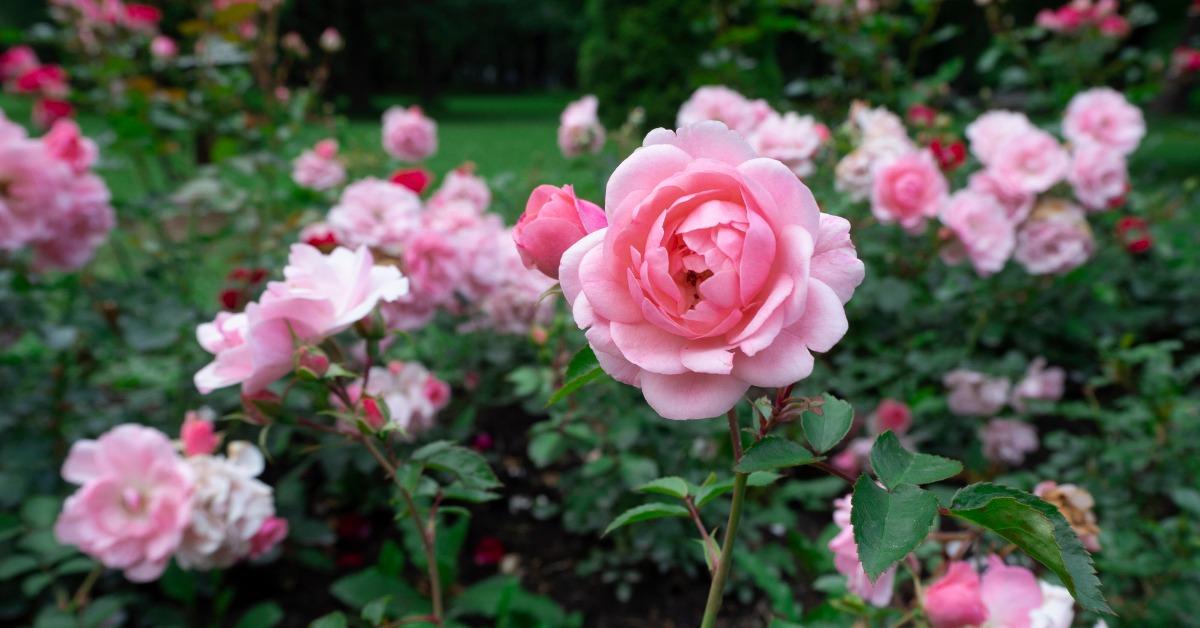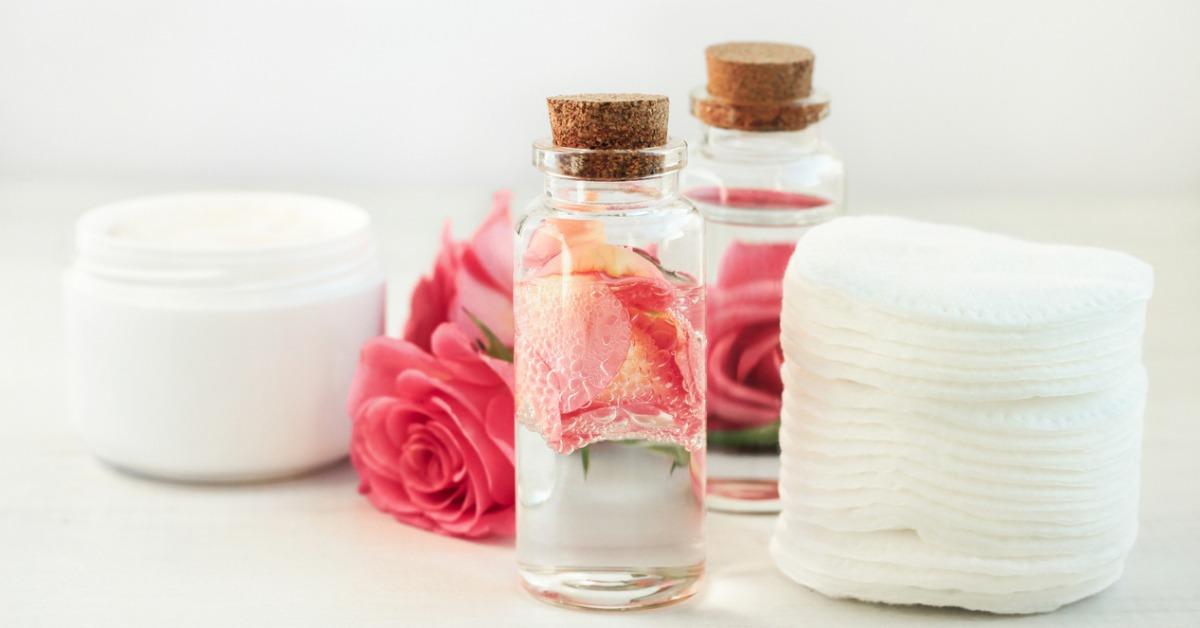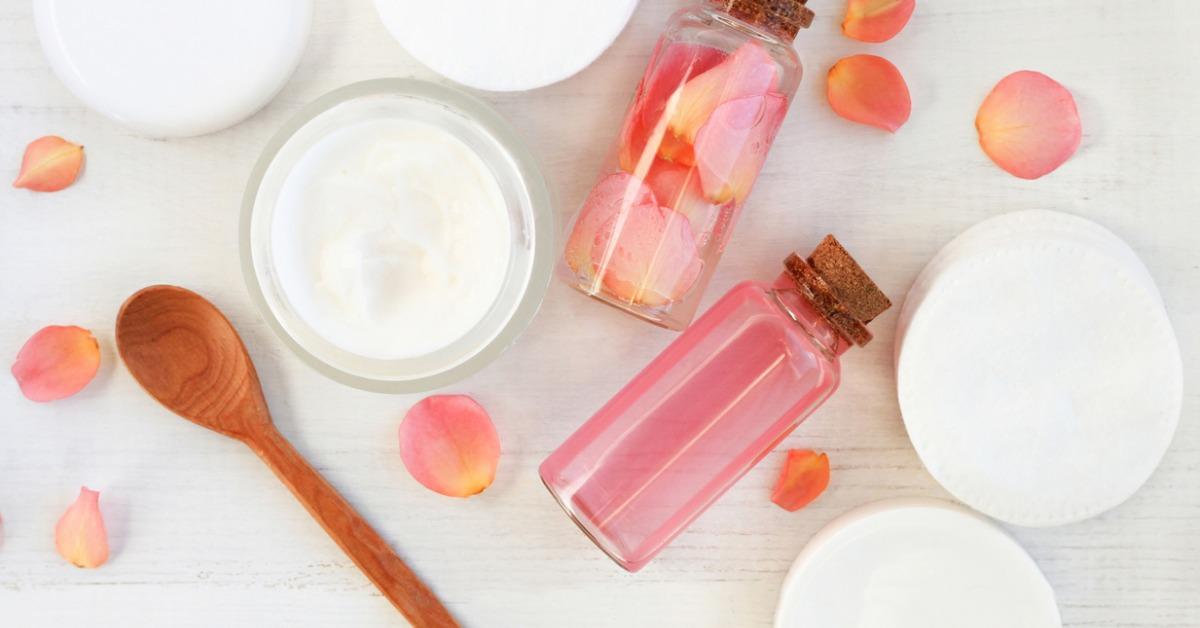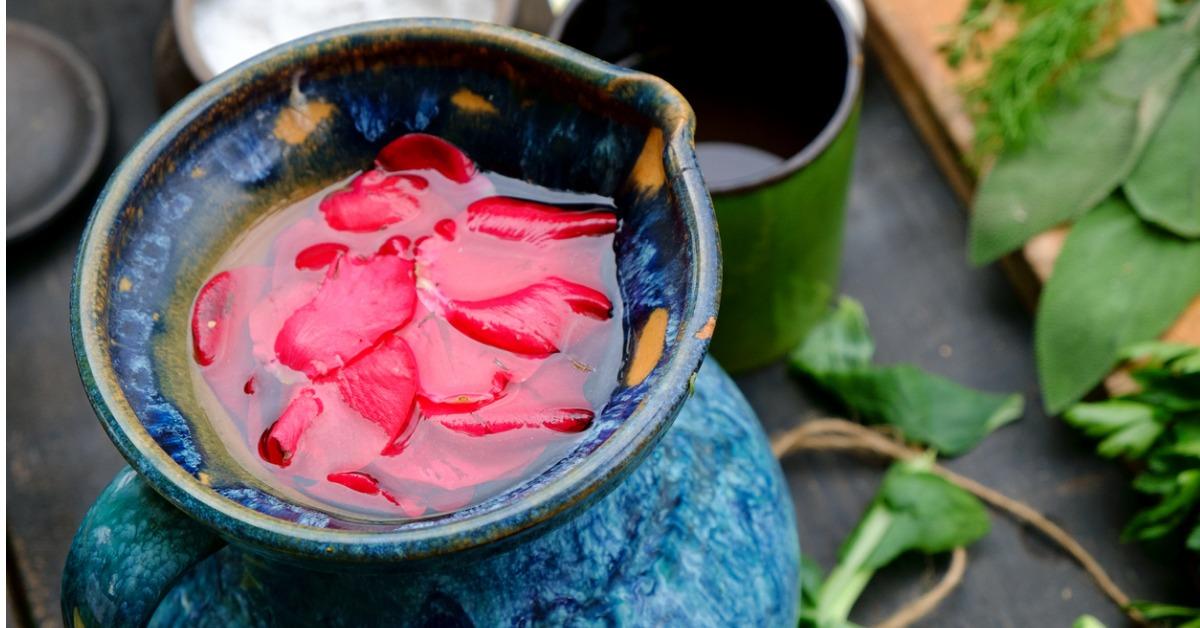How to Make Rose Water at Home
Published Nov. 30 2020, 12:22 p.m. ET

For thousands of years, rose water has been used as both a flavor enhancer, a beauty product, and a component of medicines and fragrances. The practice of blending water and rose petals first began in the Middle East, but has been refined and continued into the modern day. Rose water has 1,001 uses and oddly enough, it’s actually pretty easy to make your own rose water at home — if you’ve got the patience.

What is rose water good for?
To say that roses are “not just a pretty face” would be an understatement. This fickle flower has always had a reputation for being beautiful and prickly all at once, but did you know that roses are good for more than just a last-minute anniversary gift? According to a study conducted in 2012, the rose has proven to have anti-inflammatory properties.
In terms of its medicinal effectiveness, rose water has also been known to have antibacterial properties and can be used to speed up the healing process for small cuts and wounds. It also possesses antioxidant properties that strengthen skin cells and regenerate skin tissues. On top of all that, the fragrance it emits is a known mood enhancer that can ease anxiety.
Rose water itself has been used over the centuries to improve metabolism and flush toxins from the body. At the same time, this miracle liquid can also add flavor to coffees, teas, and desserts, can soothe a sore throat, and is a beautiful addition to anyone’s skin-care regiment. Rose water’s benefits as a beauty product include hydrating and softening skin, tightening pores, smoothing out fine lines and wrinkles, and reducing redness or irritation.

How do I make rose water at home?
Making rose water at home is not prohibitively expensive or unnecessarily complicated. The first step in all of it, though, is finding the best roses for the job.
How do I choose the right rose petals?
Fresh roses are essential for making good quality rose water, and if you happen to have a rose bush in your yard, that is probably the best place to get them. Those whose gardens lack such floral finery need not worry, however. Buying fresh roses from your local flower shop will do just fine. Before you buy, be sure that the roses are organic, free of toxic chemicals, and pesticide-free.
If you don’t have access to fresh roses, dried rose petals will also work. Above all, the most important factor in choosing roses will be the fragrance of the flowers. Pink and red roses have a stronger scent and have more petals. White, yellow, or orange roses, on the other hand, tend to have notes of other scents in their overall fragrance. They could smell like a combination of rose and violet, lemon, or even clove.

What are the methods to make homemade rose water?
According to PureWow, the easiest and fastest method for making rose water involves simmering your rose petals in a large pot of distilled water. Once you have decided on your type of roses, pluck the petals from the stems until you have about half a cup to a cup of fresh petals. Note that 1 cup of fresh petals is equal to about two or three full flowers. Rinse the petals in tap water then add them to a pot of filtered or distilled water. About 1.5 cups of water should be sufficient.
Submerge the petals in the water and turn the burner to medium heat. Once the water starts to simmer, reduce the heat and leave it on the burner for about 15 to 30 minutes, or just until the petals have lost their color. Turn the heat off and cover with a lid until they cool completely. Strain the mixture through cheesecloth and discard the spent petals. (Maybe throw them into your kitchen compost bin.) Voila! You now have rose water!
You can store your rose water in a sealed container, Mason jar, or spray bottle for up to a month in the refrigerator. Because of the lack of preservatives, the water will only last a week at room temperature. That’s just the price you pay for a truly organic and homemade product.

Are there any other ways to make rose water at home?
There are other methods out there for making rose water, but some of them are a bit more time-intensive and difficult. The first and most traditional method involves distilling the roses in a covered pot and placing ice on the top to create a cool barrier above the simmering water. The addition of ice will create a more condensed and purified form of rose water, it just takes more effort.
The final method involves crushing the rose petals with a mortar and pestle before simmering them as in the first method. It’s effective, but it’s really only utilized by those who want to create a larger quantity of rose water.
How do I use rose water?
Rose water can be used as a toner if you combine it with your favorite essential oils. The same oils could also be mixed with it to create a natural perfume as well. It can be spritzed from a cold spray bottle to make a cooling mist for your face or your linens. You can use it to soothe skin irritation or cuts, and it can even be mixed in with food to add vitamins and subtle flavor to a number of dishes.